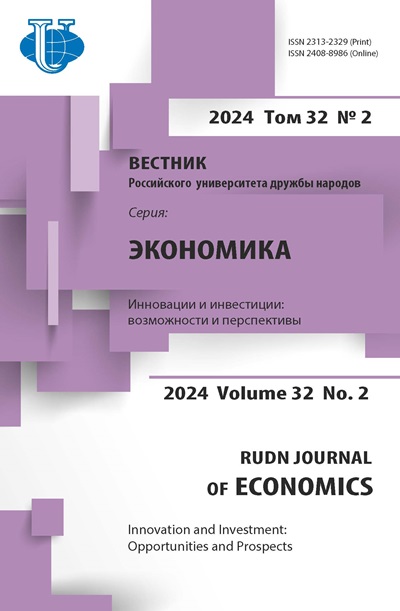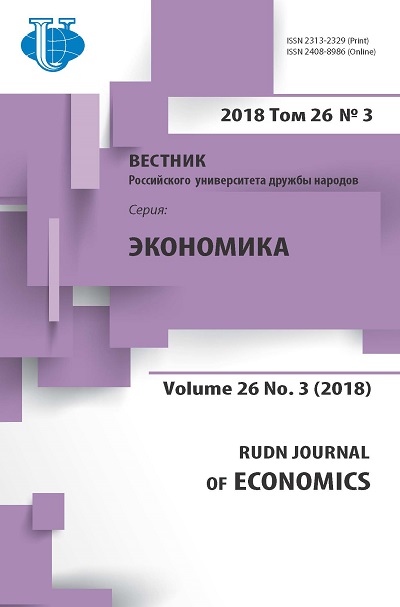Жилищные условия иммигрантов на рынке жилья в России: результаты социологического исследования
- Авторы: Мичигами М.1
-
Учреждения:
- Университет Ниигаты
- Выпуск: Том 26, № 3 (2018)
- Страницы: 531-542
- Раздел: МИРОВОЙ РЫНОК ТРУДА И МЕЖДУНАРОДНАЯ МИГРАЦИЯ
- URL: https://journals.rudn.ru/economics/article/view/20307
- DOI: https://doi.org/10.22363/2313-2329-2018-26-3-531-542
Цитировать
Полный текст
Аннотация
Исследование основано на результатах социологического опроса, проведенного автором в 25 городах России с июня 2017 по март 2018 г. Особое внимание уделяется трудовым иммигрантам из Центральной Азии, Украины, Беларуси и Кавказа в России. Статья основана на следующих положениях: во-первых, соотношение между демографическими характеристиками и сферой арендного жилья в России, во-вторых, многослойная структура и неформальность российского рынка жилья, наконец, связь между условиями и производительностью труда трудовых мигрантов. В заключение указывается, что российский рынок жилья отделен от рынка жилья мигрантов. Жилищные сделки с мигрантами, возможно, являются теневой частью российского рынка жилья. Большая часть сделок на данном рынке проходит вне поля официальной статистики. Все это является препятствием для потенциальных иностранных инвесторов. Кроме того, качество жилищных условий иммигрантов слишком низкое, чтобы поддерживать их производительность труда на высоком уровне. Нужно стремиться к улучшению жилищных условий для трудовых иммигрантов и созданию более прозрачного рынка жилья в России.
Ключевые слова
Об авторах
Маю Мичигами
Университет Ниигаты
Email: michigami@econ.niigata-u.ac.jp
доктор экономических наук, доцент экономического факультета Университета Ниигаты, Япония 8050, Икараши 2-но-чо, Ниси-ку, Ниигата, 950-2181, Япония
Список литературы
- Ashkenazi L., Vekshtein M. (2009). Natsionalnye predpochteniya pri arende zhilploshadi v Moskve, ili «krome KKA i Azii» [National preference when renting housing space in Moscow or “except for Caucasian and Asian”]. Vestnik Obschestvennogo Mneniya, 99(1), 97-100 (In Russ.)
- Demintseva Y. (2014). The New Muscovites, Migrants from Central Asia. Russia in global affairs, (1). Available at: http://eng.globalaffairs.ru/number/The-New-Muscovites-16509
- Demintseva E., Peshkova V. (2014). Migranty iz Srednei Asii v Moskve [Migrants from Central Asia in Moscow]. Demoscope, 597-598. Available at: http://www.demoscope.ru/weekly/2014/0597/ tema01.php
- Demintseva E. (2017). Labour Migrants in Post-Soviet Moscow: Patterns of Settlement. Journal of Ethnic and Migration Studies, 43(15), 2556-2572. (In Russ.)
- Fedotenkov I., Mikolajun I. (2013). Migration and Welfare. International Atlantic Economic Society, 19, 71-73.
- Kashnitsky I., Gunko M. (2016). Spatial variation of in-migration to Moscow: Testing the effect of housing market. Cities, 59, 30-39.
- Limonov L., Nesena M. (2016). Regional cultural diversity in Russia: does it matter for regional economic performance? Area Development and Policy, 1(1), 63-93.
- Michigami Mayu (2016). Shijohendou ni yureru Rosia Toshi Juutaku [Russian Urban Housing swaying to the Market Fluctuation]. In Koji Nakatsu (ed.). Kironitatsu Chugoku to Rosia [China and Russia at the Crossroad]. Soseisha, 171-192. (In Japanese.)
- Michigami Mayu (2017). Immigrants’ housing environment and multi-layered structure of housing market in Russia: from the interim results of sociological questionnaire. Migratsiya i sotsialinoekonomicheskoe razvitie, (4). (Forthcoming.)
- Michigami Mayu (Mimeo). Perspectives and Obstacles of Urban Planning Business on the JapanRussia Economic Cooperation: Uncertainty of Investment, Law, Household Income, and Business Matching for Japanese Housing Related Industries. Annual International Conference “Evolution of International Trading System: Prospects and Challenges”
- Rosstat (2012, 2016). Rossiyskaya Statisticheskaya Ezhegodnik [Russian Statistical Yearbook]. Moscow: Rosstat Publ
- Rossiskaya Gazeta. (23 august 2017). https://rg.ru/2017/08/23/reg-cfo/v-moskve-ceny-na-arendukvartir-ostalis-prezhnimi.html
- Sigarev A.V., Kosov M.E. (2016). Spetsifika primeneniya tsenovoi diskriminatsii pri realizatsii informatsionnykh blag pocredstvom elektronnoi torgovli [Specificity on the application of price discrimination in the implementation of information goods through electronic commerce]. Finansovaya analitika: problem i resheniya, 9(10), 22-30. (In Russ.)
- OOO “Sterniks konsoliting” [Sternyk Consulting]. (2017). Zhilishny rynok gorodov Rossii v 1 polgody 2017 g.: stagnatsiya nadolgo [Housing market in Russian cities in the first half of 2017: long stagnation]. Moscow. Available at: http://realtymarket.ru/
- Tang Z., Smith M.D., Montgomery A. (2007). The Impact of Shopbot Use on Prices and Price Dispersion: Evidence from Online Book Retailing. Working paper. Heinz College Research, Carnegie Mellon University. Available at: http://repository.cmu.edu/cgi/viewcontent.cgi?article =1046&context=heinzworks
- TSIAN: real-estator website. (3 September and 7 November 2017). Available at: https://www.cian.ru/ Vendina O.I. (2004). Mogut li v Moskve vozniknut’ etnicheskie kvartili? [Can the ethnic apartment be born in Moscow?]. Vestnik Obschestvennogo Mneniya, (3), 52-64. (In Russ.)
- Vendina O.I. (2005). Migranty v Moskve: grozit li rossiyskoi stolitse etnicheskaya segregatsiya? [Migrants in Moscow: does the ethnic segregation threaten Russian capital?]. Migratsionnaya situatsiya v regionakh Rossii, (3). (In Russ.)
- Zaionchkovskaya Zh.A., Mkrtchan N.V., Vendina O.I., Tyuryukanova E.V., Ivanova T.D., Gel’bras V.G. (2009). Immigranty v Moskve [Immigrants in Moscow]. Moscow, Center of Migration Research, Institute Kennan. (In Russ.)















